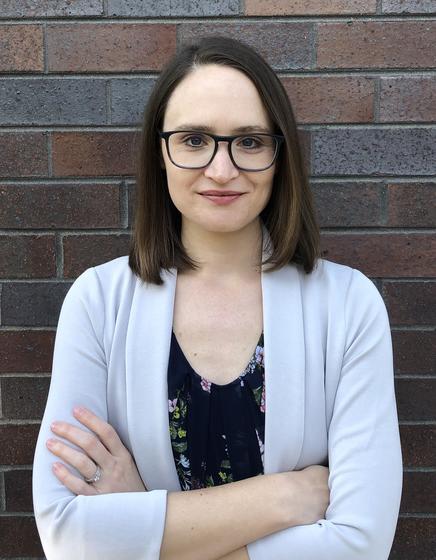With schools out and summer in full swing, many of us take advantage of George Mason University’s location to spend some vacation time at the nearby beaches, local mountains, or even just at home. For most of us, it’s relaxation. For Lauren Kuykendall, it’s research.
Kuykendall, an associate professor of industrial-organizational psychology at George Mason, is working to define the relationship between out-of-office availability and organizational culture in order to help employees and employers be better about taking restful, recuperative vacation time.
She started her research last year with a survey of away messages.

“We wanted to see how people signal availability, and how that aligns with their perceptions of the norms of their team or work group,” she explained. “Most people don’t want to check emails on vacation, but if this is normalized in your work group, you start to worry about what others will think if you’re gone for two weeks.”
They found evidence that people in groups with high expectations for responsiveness, for example, were more likely to avoid setting firm no-contact boundaries in their away messages.
This inspired Kuykendall to design a more robust research model. During summer 2024, she will be conducting more comprehensive surveys with research participants before and after their vacations to better understand how workplace social dynamics impact vacation experiences.
As an expert in employee well-being, burnout, and work-nonwork balance, Kuykendall believes that “people do things because they are desirable and because they are feasible. Vacations are desirable, but they don’t always feel feasible because of the repercussions: hundreds of emails, working long hours right before in order to be able to go on vacation, so on and so forth. So people sometimes choose not to bother. They don’t see the net positive of it.”
But she believes there are ways employees can set up themselves and their teams for vacation success. First, through forming habits around recuperative and restful behaviors. “Habits are essentially self-controlled behavior, and it’s funny to think about leisure as a self-controlled behavior,” she said. “But it’s important for us to have these leisure activities that are habits for us to create that separation between work and nonwork. It’s a great protection against burnout.”
Second, Kuykendall emphasized that a group’s culture of work-nonwork boundaries is established through modeling. “The leaders, supervisors, and organizations as a whole have a crucial part to play in making it easier for people to set and maintain the balance,” she said. “And there are practical things that teams and leaders can do, like encouraging their team to plan for expected absences.”
She uses the phrase “pausing requires planning.” People don’t go on vacations because there is a fear that taking time away doesn’t feel feasible, whether you’re working on complex projects, running interdependent research, or supervising employees or students. But even the act of preparing others for your absence can make a huge difference.
“The sooner you tell people your plans, the more time everyone has to prepare and set up alternative workflows to accommodate,” she said. “And, if you’re in a leadership position, it models for employees that vacations are possible.”
Kuykendall said it’s become more commonplace, now, for colleagues in her department to let others know their upcoming out-of-office dates well in advance, a behavior that was modeled by a former department chair so everyone could plan accordingly for his absence. Several of her colleagues now include their upcoming unavailability in their email signatures.
These practices aren’t just for multi-week vacations. “There’s a place for all lengths of vacations and breaks in our work-nonwork balance,” she said. “Everything from lunch breaks to week-long vacations have a purpose in restoring us.”
Skipping lunch every day but taking a two-week sojourn every six months, for example, isn’t an effective long-term solution for most people. It’s about the total package, Kuykendall said, and how we prioritize healthy work-rest rhythms in both the short- and long-term that will protect us from burnout.
Kuykendall is teaching and researching over the summer. But she also has her own vacation coming up in August to the Pacific Northwest. Talking about her upcoming vacation served as a reminder to for her to send an email with further information about her departure and what to expect while she’s gone.
“It’s PTO,” she joked. “I have to Prepare The Others."
Related News
- December 11, 2025
- December 11, 2025
- November 25, 2025
- November 18, 2025
- November 17, 2025
